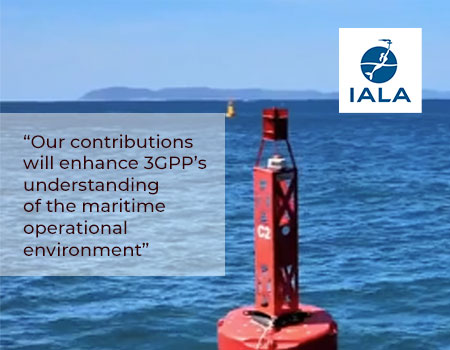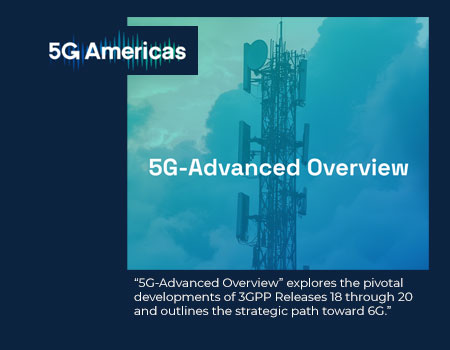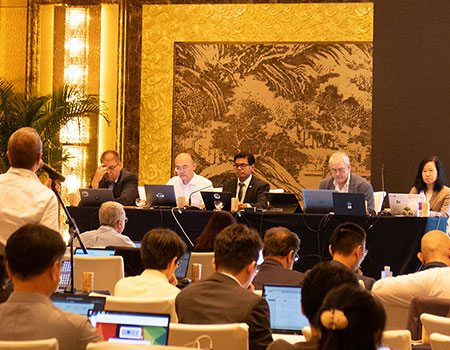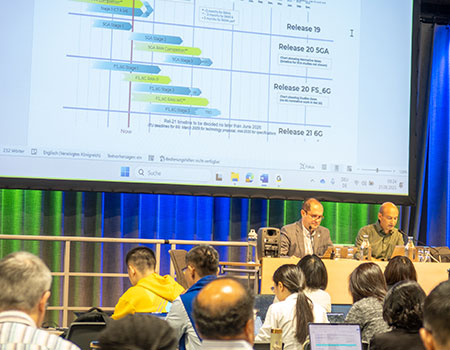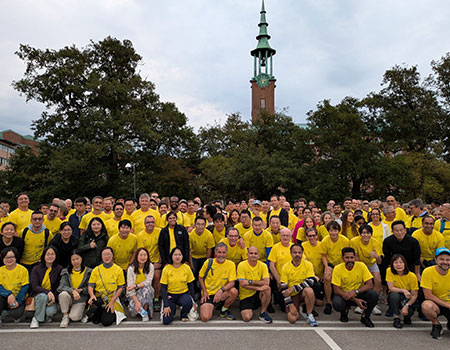RCS VoLTE interoperability tests
Nov 15,2012
Organised by: the Multi?Service Forum (MSF), ETSI and the GSMA
The interoperability of LTE and IMS components for Rich Communication Suite (RCS) and Voice over LTE (VoLTE) were tested during a recent Interoperability event simultaneously held at the China Mobile Research Institute in Beijing, China and the Sintesio facility in Kranj, Slovenia.
Following on from past MSF VoLTE and ETSI IMS testing, this new event sought to demonstrate that the GSMA technical recommendations, based on the 3GPP specifications, are mature and interoperable.
Scenarios:
The event white paper (pdf file) describes its major successes as being:
Additional information about the event can be found at http://www.msforum.org/interoperability/RCSVoLTE.shtml.
User Plane 3GPP TS 29.281 (GTPv1?U) |
User Plane 3GPP TS 29.281 (GTPv1?U) |
User Plane 3GPP TS 29.281 (GTPv1?U).|
User Plane 3GPP TS 29.281 (GTPv1?U).|
Control Plane 3GPP TS 29.274 (GTPv2?C)|
Control Plane 3GPP TS 29.274 (GTPv2?C)|
Control Plane 3GPP TS 29.274 (GTPv2?C)Page 42 |
Control Plane 3GPP TS 29.274 (GTPv2?C)Page 42 |
User Plane 3GPP TS 29.281 (GTPv1?U)|
User Plane 3GPP TS 29.281 (GTPv1?U)|
GSMA technical recommendations
See http://www.gsma.com/rcs/specifications/
Get the results in the event white paper (pdf file)
About the MSF
The MultiService Forum (www.msforum.org) is a global association of service providers, system suppliers and test equipment vendors committed to developing and promoting open?architecture, multiservice Next Generation Networks. The MSF's activitiesinclude developing Implementation Agreements, promoting worldwide compatibility and interoperability of network elements, and encouraging input to appropriate national and international standards bodies.
About GSMA
The GSMA represents the interests of mobile operators worldwide. Spanning more than 220
countries, the GSMA unites nearly 800 of the world’s mobile operators, as well as more than 200
companies in the broader mobile ecosystem, including handset makers, software companies,
equipment providers, Internet companies, and media and entertainment organizations.
About ETSI
ETSI produces globally?applicable standards for Information and Communications Technologies (ICT), including fixed, mobile, radio, converged, aeronautical, broadcast and internet technologies and is officially recognized by the European Union as a European Standards Organization.
ETSI Plugtests are interoperability test events that cover a wide range of telecommunications, Internet, broadcasting and multimedia converging standards. For more information, please visit: www.etsi.org/plugtests
The interoperability of LTE and IMS components for Rich Communication Suite (RCS) and Voice over LTE (VoLTE) were tested during a recent Interoperability event simultaneously held at the China Mobile Research Institute in Beijing, China and the Sintesio facility in Kranj, Slovenia.
Following on from past MSF VoLTE and ETSI IMS testing, this new event sought to demonstrate that the GSMA technical recommendations, based on the 3GPP specifications, are mature and interoperable.
Scenarios:
- RCS VoLTE in a single/home network,
- RCS VoLTE for Roaming & Interconnect,
- non?LTE access to EPC,
- Handover (intra?LTE and LTE Other RAN/CS).
The event white paper (pdf file) describes its major successes as being:
- Multi-vendor interoperability of UEs/clients, network infrastructure and services.
- The two host sites were interconnected via an IPX,
- VoLTE and multimedia (voice/video) calls were demonstrated together with multi-media telephony services as well as configuration of these services,
- Voice and video calls were established with the appropriate quality of service utilizing the policy framework.
- DIAMETER Routing Agents (DRAs) simplified the DIAMETER message routing within a single network and between networks (via the IPX) when subscribers were roaming.
- RCS services were demonstrated
Additional information about the event can be found at http://www.msforum.org/interoperability/RCSVoLTE.shtml.
Interface References
User Plane 3GPP TS 29.281 (GTPv1?U) |
| LTE?Uu (UE – eNodeB) | 3GPP TS 36.300 (E?UTRAN protocol) | ||
| S1?MME (UE – MME) | 3GPP TS 24.301 (Non Access Stratum) | ||
| S1AP (eNodeB?MME) | 3GPP TS 36.413 (S1 Application Protocol) | ||
| S1?U (eNodeB ? S?GW) | 3GPP TS 29.281 (GTPv1?U) | ||
| X2 (eNodeB – eNodeB) | Signaling 3GPP TS 36.423 (X2 Application Protocol) |
User Plane 3GPP TS 29.281 (GTPv1?U).|
| S3 (S4 SGSN – MME) | 3GPP TS 29.274 (GTPv2?C) | ||
| S4 (S4 SGSN – S?GW) | Control Plane 3GPP TS 29.274 (GTPv2?C). |
Control Plane 3GPP TS 29.274 (GTPv2?C)|
| S5 (S?GW ? P?GW) | User Plane 3GPP TS 29.281 (GTPv1?U) |
Control Plane 3GPP TS 29.274 (GTPv2?C)Page 42 |
| S6a (HSS – MME) | 3GPP TS 29.272 (Diameter) | ||
| S6b (P?GW – 3GPP AAA) | 3GPP TS 29.273 (Diameter) | ||
| S6d (HSS – S4 SGSN) | 3GPP TS 29.272 (Diameter) | ||
| S8 (S?GW – P?GW) | User Plane 3GPP TS 29.281 (GTPv1?U) |
User Plane 3GPP TS 29.281 (GTPv1?U)|
| S9 (PCRF – PCRF) | 3GPP TS 29.215 (Diameter). | ||
| S10 (MME – MME) | 3GPP TS 29.274 (GTPv2?C). | ||
| S11 (MME – S?GW) | 3GPP TS 29.274 (GTPv2?C) | ||
| S12 (UTRAN – S?GW) | 3GPP TS 29.281 (GTPv1?U, utilized for direct tunnel model). | ||
| Gx (PCRF – P?GW) | 3GPP TS 29.212 (Diameter). | ||
| Rx (PCRF ? IP Application ) | 3GPP TS 29.214 (Diameter). | ||
| Gr (SGSN – HSS) | 3GPP TS 29.002 (MAP) | ||
| Gn (SGSN – MME / SGSN – P?GW) | Control Plane 3GPP TS 29.060 (GTPv1?C) |
| Gm (UE – P?CSCF) | 3GPP TS 24.229 (IMS SIP) | ||
| Mw (x?CSCF – x?CSCF) | 3GPP TS 24.229 (IMS SIP) | ||
| Mx (x?CSCF – IBCF) | 3GPP TS 24.229 (IMS SIP) | ||
| ISC (S?CSCF – AS) | 3GPP TS 24.229 (IMS SIP) | ||
| Mr (CSCF – MRF) | 3GPP TS 24.229 (IMS SIP) | ||
| Mr’ (AS – MRF) | 3GPP TS 24.229 (IMS SIP)Page 43 | ||
| Cr (AS – MRF) | 3GPP TS 24.229 , 24.147 , 27.247 (IMS SIP) | ||
| Ut (UE – AS) | 3GPP TS 24.623 (XCAP) | ||
| SGi (EPC based PLMN and another packet data network) | 3GPP TS 29.061 (IP) | ||
| ENUM | IETF RFC 6116 (ENUM) | ||
| S102 (MME – 1xCS IWS) | 3GPP TS 29.277 (3GPP2 A21) | ||
| Ici (IBCF?IBCF) | 3GPP TS 29.165 (IMS SIP) | ||
| Izi (TrGW?TrGW) | 3GPP TS 29.165 (RTP/MSRP) | ||
| Mb (MRF ? UE) | 3GPP TS 23.002 , TS 29.163 (RTP) | ||
| Sv (MME ? MSC) | 3GPP TS 29.280 (GTPv2?C) |
GSMA technical recommendations
See http://www.gsma.com/rcs/specifications/
- RCS?e – Advanced Communications: Services and Client Specification: Version 1.2.1
- Rich Communication Suite 5.0 Advanced Communications: Services and Client Specification
- PRD IR.65 ? IMS Roaming and Interworking Guidelines,
- PRD IR.88 ? LTE Roaming Guidelines,
- PRD IR.92 ? IMS Profile for Voice and SMS,
- PRD IR.90 – RCS Interworking Guidelines,
- PRD IR.67 – DNS/ENUM Guidelines for Service Providers and GRX/IPX,
- PRD IR.58 – IMS Profile for Voice over HSPA,
- PRD IR.94 – IMS Profile for Conversation Video Service.
Get the results in the event white paper (pdf file)
About the MSF
The MultiService Forum (www.msforum.org) is a global association of service providers, system suppliers and test equipment vendors committed to developing and promoting open?architecture, multiservice Next Generation Networks. The MSF's activitiesinclude developing Implementation Agreements, promoting worldwide compatibility and interoperability of network elements, and encouraging input to appropriate national and international standards bodies.
About GSMA
The GSMA represents the interests of mobile operators worldwide. Spanning more than 220
countries, the GSMA unites nearly 800 of the world’s mobile operators, as well as more than 200
companies in the broader mobile ecosystem, including handset makers, software companies,
equipment providers, Internet companies, and media and entertainment organizations.
About ETSI
ETSI produces globally?applicable standards for Information and Communications Technologies (ICT), including fixed, mobile, radio, converged, aeronautical, broadcast and internet technologies and is officially recognized by the European Union as a European Standards Organization.
ETSI Plugtests are interoperability test events that cover a wide range of telecommunications, Internet, broadcasting and multimedia converging standards. For more information, please visit: www.etsi.org/plugtests


 Partners News
Partners News 